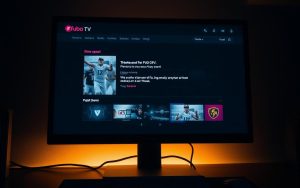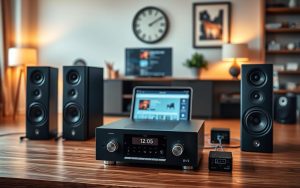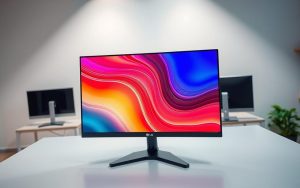Table of Contents
Modern monitors offer more than just connectivity for workstations. Many models support direct playback of DVDs through HDMI, eliminating the need for a separate device. This feature turns them into versatile multimedia hubs.
Key factors determine success: HDCP compliance ensures content protection, while proper HDMI connectivity guarantees smooth signal transmission. Some units, like the Dell E207WFP, handle this task effortlessly.
Not all setups work identically. Resolution mismatches or HDCP errors may occur. Alternative connections like DVI or VGA require adapters but offer workarounds. Audio output needs separate consideration for full functionality.
This guide explores technical requirements, compares monitor-TV setups, and addresses licensing nuances. Practical solutions help overcome common challenges for seamless entertainment experiences.
Understanding the Basics: Will a Monitor Display DVD HDMI Output Without a Computer?
Standalone DVD playback on modern displays is possible with the right setup. Key factors like HDCP compliance and proper signal transmission determine success. Units like the Dell E207WFP excel in this role.
Key Requirements for Standalone DVD Playback
HDCP (High-bandwidth Digital Content Protection) is mandatory for encrypted content. Screens must support at least 720p resolution for clear playback. Digital signals via HDMI ensure crisp visuals without conversion lag.
Analog options like VGA lack HDCP support, causing compatibility issues. Monitors should auto-detect the last used input for convenience. This eliminates manual switching between sources.
HDMI vs. Other Connection Types
HDMI delivers audio and video in one cable, simplifying setups. DVI shares digital video signals but requires separate audio routing. Both support HDCP for protected content.
VGA, an analog standard, struggles with modern encryption. Adapters may introduce signal degradation. For optimal results, prioritize digital connectors like HDMI or DVI.
Essential Equipment for DVD Playback on a Monitor
Essential gear makes the difference between smooth playback and frustrating errors. Three components are critical: a compatible player, a properly equipped screen, and an audio solution. Each must meet specific standards for optimal performance.
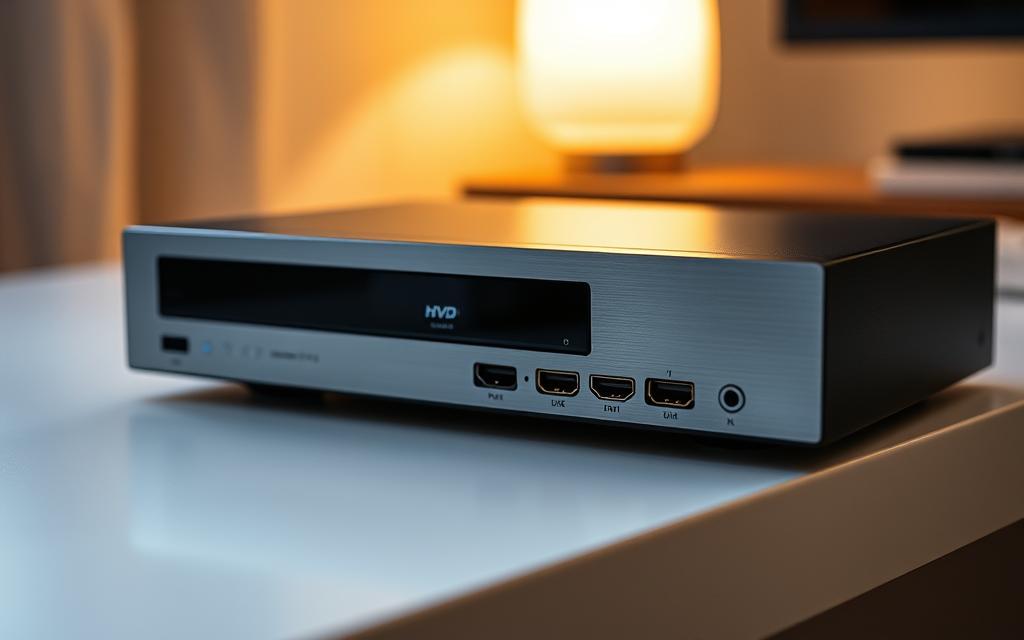
Choosing the Right DVD Player with HDMI Output
Modern players must support HDMI 1.4 or higher for HDCP compliance. Upscaling models like the Sony DVPSR510H enhance older discs to near-HD quality. Key features to evaluate:
- HDMI version: 2.0 ensures 4K upscaling
- Aspect ratio: 16:9 matches widescreen monitors
- Audio outputs: RCA or optical for external systems
Monitor Specifications: HDCP Compliance and Resolution
Screens like the BenQ GL2450HM (1920×1080) or ASUS MX239H (IPS panel) excel with 250cd/m² brightness. Minimum requirements:
- HDCP 2.2 for newer encrypted content
- 720p resolution (1280×720) minimum
- TN vs. IPS: Wider viewing angles on IPS panels
Audio Solutions: Built-in Speakers vs. External Systems
Most screens have weak built-in speakers. For richer sound:
- Soundbars with RCA inputs (e.g., Creative Stage V2)
- HDMI audio extractors for analog systems
- Optical connections for lossless quality
Models like the Samsung S24C300HS include 3.5mm audio-out for headphones or external setups.
Step-by-Step Setup Guide
A seamless viewing experience starts with proper hardware configuration. Follow these steps to connect your player, optimize settings, and resolve common issues.
Connecting the DVD Player to the Monitor
Use a high-speed HDMI cable for the best results. Plug one end into the player’s HDMI port and the other into the screen’s HDMI input. For DVI connections, add an adapter to maintain *signal integrity*.
Power on both devices in this order:
- Turn on the player first
- Activate the screen second
This sequence helps avoid HDCP handshake errors.
Configuring Resolution and HDCP Settings
Navigate to the player’s menu to set the resolution. Match it to your screen’s native specs—480p for older discs, 720p or 1080p for sharper visuals.
Enable HDCP in both devices’ settings. If the display shows an error, try these fixes:
- Update firmware on the player
- Swap the HDMI cable
- Test with another HDMI port
Testing and Troubleshooting Initial Setup
Play a disc to check for signal stability. If the image flickers, adjust the color space to RGB or YCbCr in the player’s menu.
For audio problems, verify the connection:
- Built-in speakers: Ensure volume isn’t muted
- External systems: Confirm RCA/optical cables are secure
Test patterns help identify aspect ratio mismatches early.
Common Challenges and How to Solve Them
Even with proper connections, users often face unexpected playback obstacles. Identifying root causes—like encryption conflicts or hardware limitations—streamlines fixes. Below are targeted solutions for frequent issues.
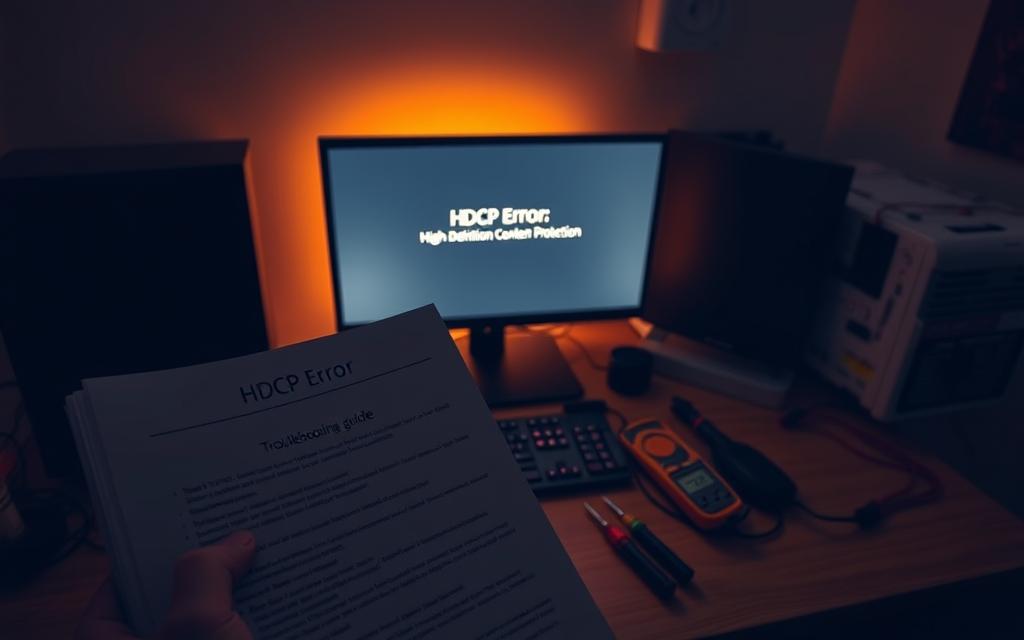
HDCP Errors and Compatibility Issues
HDCP 2.2 conflicts with older 1.4 devices are common. Symptoms include blank screens or error messages. Quick fixes:
- Update firmware on both player and screen
- Try alternate HDMI ports or cables
- Use an EDID spoofer for incompatible devices
For persistent errors, Belkin’s remote-controlled power solutions reset HDCP handshakes effectively.
Resolution Mismatches and Display Problems
Mismatched resolutions blur image quality or crop content. Force the player to output native resolution (e.g., 1080p) via its settings menu. Additional tips:
- Disable overscan in monitor settings
- Adjust color depth to 8-bit for older discs
- Test different aspect ratios (4:3 vs. 16:9)
Audio Output Challenges
Audio output issues range from sync delays to complete silence. Digital extraction methods help:
- Optical cables bypass HDMI audio handshake errors
- Ground loop isolators eliminate humming noises
- Set latency adjustments in player settings (e.g., +50ms)
For setups without built-in speakers, soundbars with RCA inputs deliver richer sound.
Alternative Solutions for DVD Playback
When standard setups don’t meet your needs, creative alternatives offer flexibility. Whether upgrading hardware or repurposing existing devices, multiple options exist for seamless entertainment.
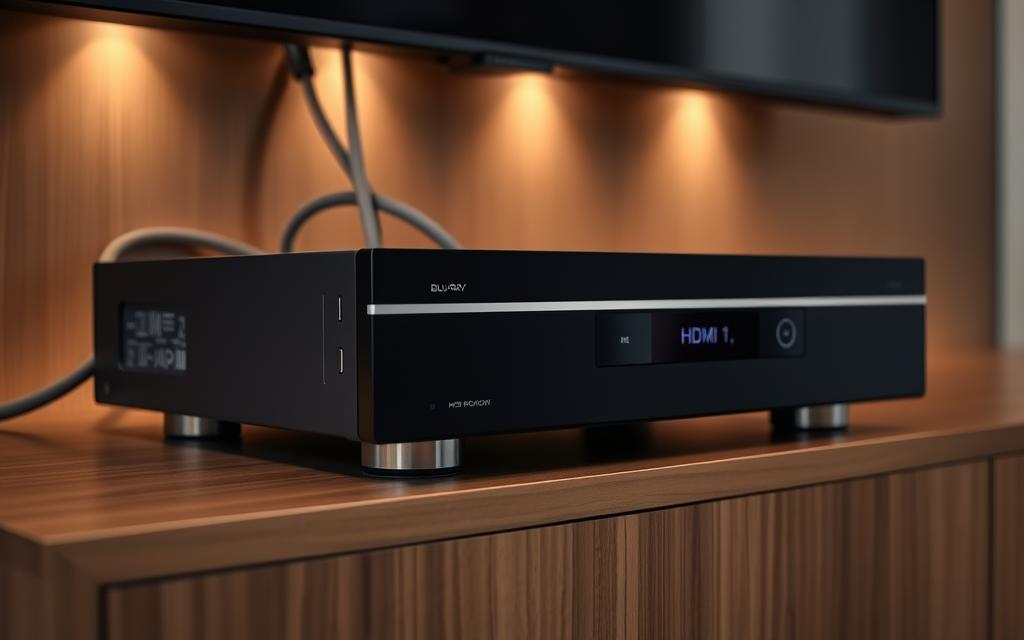
Blu-ray Players: Future-Proof Entertainment
Blu-ray players provide backward compatibility with older discs while supporting modern formats. Models like the Sony UBP-X700 handle DVDs and 4K content effortlessly. Key advantages:
- Upscaling improves standard-definition content
- Built-in streaming apps expand viewing choices
- HDMI 2.0 ensures HDCP 2.2 compliance
For budget-conscious users, Logik’s TV/DVD combos bundle functionality in one unit. These space-saving solutions eliminate separate components.
Laptop Media Centers: Versatile Bridges
Connecting a laptop transforms any screen into a multimedia hub. Windows 7 and newer systems support HDCP for protected content playback. Setup tips:
- Use HDMI for both video and audio transmission
- Configure extended displays for multi-tasking
- Enable cinema mode for optimized playback
For permanent installations, KVM switches manage multiple sources efficiently. This maintains clean cable management.
TV vs. Monitor: Choosing the Right Display
Televisions often include built-in tuners and speakers, simplifying setups. Compare key factors:
| Feature | TV | Monitor |
|---|---|---|
| Input Lag | 15-30ms (gaming models lower) | 1-5ms (better for fast motion) |
| Audio Options | Built-in speakers standard | Often requires external system |
| Smart Features | Streaming apps integrated | Rare outside specialty models |
| Licensing Requirements | May need TV license (UK) | None for pure playback |
Finlux’s all-in-one units demonstrate how hybrid designs bridge both worlds. Wall-mounting considerations favor monitors for space-constrained areas.
Conclusion
Setting up DVD playback without a computer relies on two essentials: HDCP support and proper HDMI connectivity. Choose screens with native 1080p resolution for crisp visuals and built-in speakers or external audio solutions for immersive sound.
For smooth operation, verify HDCP compliance on both devices before connecting. Troubleshoot signal errors by testing different cables or updating firmware. Budget-friendly alternatives like Blu-ray players offer better upscaling for older discs.
Always prioritize digital connections to avoid quality loss. Check local regulations if using a TV tuner. With the right setup, your monitor becomes a versatile entertainment hub.
FAQ
Can a monitor play DVDs via HDMI without a computer?
Yes, if the monitor has an HDMI input and supports HDCP. A standalone DVD player with HDMI output can connect directly to the display.
What equipment is needed to play DVDs on a monitor?
You need a DVD player with HDMI output, an HDMI cable, and a monitor with HDMI input. For audio, use external speakers if the monitor lacks built-in ones.
Why won’t my DVD player show video on the monitor?
Check HDCP compliance, resolution settings, and cable connections. Some older monitors or players may not support modern HDMI standards.
Can I use a DVI or VGA connection instead of HDMI?
Yes, but adapters may be needed. DVI supports digital signals like HDMI, while VGA is analog. Audio will require a separate solution.
How do I fix HDCP errors when playing DVDs?
Ensure both the DVD player and monitor support HDCP. Try a different HDMI cable or update firmware if available.
What if my monitor doesn’t have speakers?
Connect external speakers to the DVD player’s audio output or use an HDMI audio extractor for separate sound routing.
Can a Blu-ray player work instead of a DVD player?
Yes, Blu-ray players with HDMI output are compatible and often offer better upscaling for DVDs on monitors.
Why is the resolution incorrect when playing DVDs?
Adjust the DVD player’s output resolution to match the monitor’s native resolution in the player’s settings menu.
Is a TV better than a monitor for DVD playback?
TVs often have built-in speakers and better upscaling, but monitors with HDMI work fine if audio and resolution are properly configured.





